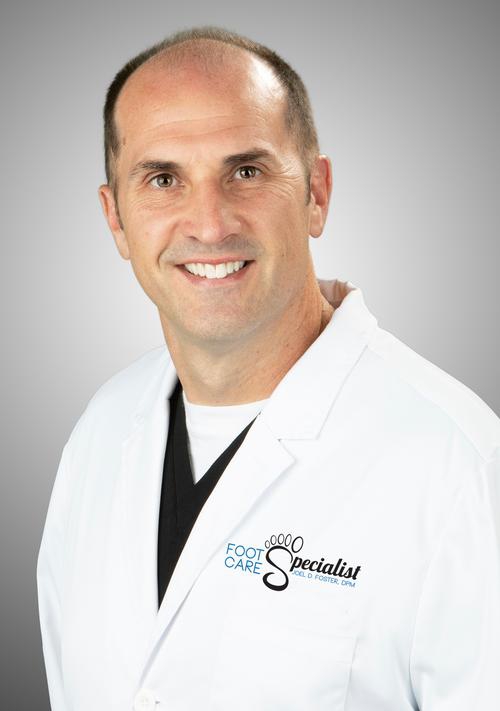Treating your talotarsal displacement then can help provide relief to these other painful foot problems.
What Can I Expect the Day of HyproCure Surgery?
The HyProCure procedure is performed as an outpatient procedure, which means you will be able to go home the same day. The surgery itself takes about 20 minutes, and you will be given local anesthesia to numb the area, so there should be no pain at all.
What Can I Expect from HyproCure Post-Surgical Recovery?
You can expect to have some pain and swelling after the surgery, but this can be managed with over-the-counter medication. You will also need to wear a dressing for about six days to protect the area as it heals.
Beyond that, you should be able to return to all your normal activities without any restrictions. Complete recovery from HyProCure surgery takes about 6-8 weeks on average.
What is the Recovery Time for HyProCure Surgery?
You will be able to walk immediately after the surgery, but we recommend that you take it easy for the rest of the day. You may also have some discomfort and tenderness in the area for a day or two after the surgery, but this can be managed with over-the-counter pain medication.
Is HyProCure Surgery Painful?
No, you will be given local anesthesia to numb the area during the surgery. You may have some discomfort and tenderness in the area for a day or two afterward, but this can be managed with over-the-counter pain medication.
Is HyProCure Surgery Covered by Insurance?
HyProCure surgery is considered to be medically necessary in most cases and is therefore covered by most insurance plans. However, it is always best to check with your insurance provider to be sure.
Safety and Effectiveness of HyproCure
Addressing common concerns about risks, side effects, and who can benefit from the procedure.
What are the Risks and Complications Associated with Hyprocure Surgery?
As with any surgery, there are potential risks and complications associated with HyProCure surgery. These include infection, bleeding, and nerve damage. However, these risks are rare, and most people who have the procedure experience little to no complications.
Is HyproCure an Experimental Treatment?
No.
In fact, sinus tarsi implants like HyProCure have been used to treat misaligned hindfeet for decades. HyProCure itself has been FDA-approved in the United States for more than 15 years, has been widely used by clinicians here and in more than 60 countries worldwide, and has a solid record of safety and success.
Sinus tarsi stents work. There are dozens of peer-reviewed studies and thousands of happy patients to prove it.
Are All Sinus Tarsi Implants the Same?
Definitely not.
Broadly speaking, there are three types of sinus tarsi implants used by doctors worldwide:
- Intra-osseous—the stent is drilled into the hindfoot bones.
- Extra-osseous, arthrodesis—hardware is used to fuse the bones, stopping joint motion.
- Extra-osseous, non-arthrodesis—the stent is placed between the bones, but much deeper within the sinus tarsi.
HyProCure fits into the third category, which works by enabling natural motion of the ankle (as opposed to blocking motion of the ankle). It provides greater benefit with fewer risks than other types of procedures.
It also specifically has some unique design features that make it much more reliable than comparable treatments (which we’ll get into in a minute).
Won’t the Stent Grind Against the Bones or Impair the Joint? Will It Lead to Arthritis?
No. As mentioned above, the HyProCure stent is placed within the naturally occurring sinus tarsi space between the ankle bone and heel bone. The sinus tarsi itself is not a joint and is not to be confused with the subtalar joint, and does not contain cartilage.
If the bones are aligned correctly, the sinus tarsi is stable and not supposed to collapse or get compressed. With HyProCure, the sinus tarsi can hold its shape and allow the subtalar joint to work and move as intended.
HyProCure will not get in the way of your bones. On the contrary, it stops them from getting in the way of each other!
If you suffer from talotarsal displacement, not getting HyProCure is the surest way to guarantee the eventual destruction of the joint.
Can the Stent Get Displaced?
It’s technically possible but extremely rare, for a couple of reasons.
First, because of the size of the stent and its depth and position within the sinus tarsi, it’s much less likely to get displaced than an “arthrodesis” stent that’s only placed within the outer half of the space.
Second, because the HyProCure stent features a specially designed, threaded barrel, it quickly “locks” into place after insertion. Once scar tissue builds up around the stent and the interosseous ligament heals around the threads, it becomes very difficult to budge.
It’s important to clarify here that, despite the threaded barrel, the HyProCure stent is not “screwed into” your foot. It is pushed straight in. The threads just keep it from moving as the tissues heal.
What Happens if the Stent Does Get Displaced or Doesn’t Work?
Unlike more conventional reconstructive surgeries that involve cutting and reshaping bones, a HyProCure procedure is fully reversible. So if for any reason the procedure needs to be adjusted or re-performed, it can be easily done by a trained professional.
But to be clear, this is rarely ever required. And in fact, HyProCure has the overall highest success rate and lowest risk of ever needing to be removed or replaced of all currently available sinus tarsi stent treatments available. The overall removal rate is just 6%.
Is HyproCure Safe for Kids? Will They Outgrow Their Misaligned Feet?
Very few forms of childhood flat feet self-correct over time. And in fact, misaligned or flat feet related to talotarsal displacement are unlikely to self-correct, and more likely to lead to long-term pain throughout the legs and back in adulthood.
HyProCure, fortunately, is safe to perform on children—even those who are still growing. You might think that your child would physically outgrow the stent, but that’s actually not true. The “chamber” of the sinus tarsi (that is, the natural space into which the stent is inserted) matures at a very early age. In fact, already by age 3, it has reached adult size and strength, and thus can readily accommodate the procedure.
The ankle bone, heel bone, and surrounding structures will continue to grow and develop and, thanks to HyProCure, they will be developing normally and in a way that no longer causes pain.
So, we would generally argue that the earlier misaligned feet are corrected, the better. It is best not to wait until 18, or any other arbitrarily defined age.
It is very unlikely that the stent would ever need to be removed or replaced even after reaching adulthood. And even if revision is needed, the procedure is once again easy to reverse.
Is HyroCure Safe for Someone With Diabetes?
Yes, it is. HyProCure has been performed on patients with diabetes successfully for more than a decade, with no indication that it puts them at elevated risk.
In fact, we’d say that, rather than being a contraindication, a diabetes diagnosis might actually be all the more reason to consider this procedure.
A realigned hindfoot will minimize pressure spots along the sole, which reduces the risk of ulceration. It will also allow someone with diabetes to be more active and better control their blood sugar. When combined with other procedures, it may even significantly reduce your risk of developing Charcot foot.
What are the Success Rates of Hyprocure Surgery?
The success rates of HyProCure surgery are very high. In fact, over 95% of people who have the procedure experience significant relief from their symptoms.

HyProCure vs. Alternative Treatments
Questions about whether you should choose HyProCure or a different form of therapy.
Why Wouldn’t I Just Get Orthotics Instead?
Custom orthotics are one possible alternative to HyProCure for misaligned feet, and one that we do often prescribe for our patients.
The advantage of orthotics is that they are completely non-invasive and, if carefully selected and worn faithfully, can often alleviate any painful problems resulting from your misaligned feet.
However, there are also drawbacks. Orthotics need to be worn at all times to provide any benefit, which means you’ll either need multiple pairs or have to switch them from shoes to shoes, and will not be able to walk more than very short distances without shoes and orthotics on. They wear out over time, too, and need to be adjusted or replaced regularly.
Most notably, though, orthotics won’t ever actually fix or correct your foot misalignment. They’ll just support and stabilize you while you wear them. HyProCure, on the other hand, offers the possibility of a permanent fix in a single appointment.
A useful analogy would be eye care. Orthotics are like wearing glasses or contacts all day, every day. HyProCure is like LASIK. It’s about accommodating the problem versus actually fixing it.
Is Hyprocure as Effective as Traditional Reconstructive Surgery?
While there is no definitive answer, most studies show that HyProCure surgery is just as effective, if not more so than traditional reconstruction surgery.
There may be some instances where a more traditional reconstructive surgery would be a better option, or is the only option. That will depend on factors such as flexibility of the hindfoot and other considerations made by your surgeon.
If you are a good candidate for HyProCure, this tends to be the superior option for many reasons, including a much lower risk of complications (infection, arthritis, nerve damage, etc.), much faster return to full weight bearing, and the fact that it’s fully reversible. And the long-term results are often equally good or better.


